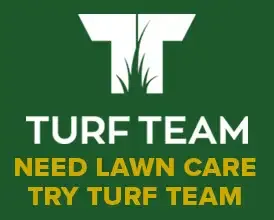The Secret To Keeping Wasps From Building A Nest In Your Wilmington Yard

In our area, there are two types of wasps to watch out for. If either of these two wasps come into your yard, it is important that they don't find ideal conditions to create nests. While it is impossible to make your yard a hundred percent resistant to nest building, you can have an impact if you apply the following strategies. First, let's take a look at those two types of wasps.
Wilmington Wasps
The two wasps you're going to see in your yard are paper wasps and yellow jackets. Both are social insects that protect their nests, gather together in a swarm, and sting multiple times. Preventing stings from occurring is strongly connected to preventing nests from being established. Paper wasps and yellow jackets are far less likely to sting you when they are away from their nests.
Paper Wasp Nests
These insects, which may be brownish red or yellow and black, will create aerial nests. Look for these nests as they are developing in the spring. They will first appear as tiny, gray, umbrella-shaped structures with hexagonal chambers inside. You'll find them in trees and bushes, or attached to structures on your property.
Some of the locations paper wasp nests may be found are:
- Under roofline
- In the upper corners of porches
- In the rafters of barns and other structures
- Under decks, especially decks that are elevated
Yellow Jacket Nests
These aggressive pests are prone to creating nests in the ground. This can present a serious threat because the vibration of a lawnmower can cause them to swarm and protect their nest.
They don't just create nests in soil cavities; most cavities will do. They've been found nesting in wall voids, attic spaces, and even inside furniture stored in attics. This attraction to creating nests in cavities makes them a particular problem from homeowners.
Strategies For Preventing Wasp Nests
-
Remove stagnant water resources around your home. Wasps need to drink as much as they need to eat. Water sources can make your yard much more suitable for nest creation.
-
Reduce bugs. Wasps don't just eat nectar. They constantly feed on sources of protein. An important source for protein comes from bugs. The more bugs you have around your home, the higher your population of wasps is likely to be.
-
Protect trash. Wasps, and particularly yellow jackets, can find a meal inside a bag of trash. It is important to keep your trash bags protected inside covered receptacles to keep from attracting unwanted attention from wasps.
-
Fill holes. If you have holes in your yard, it is an open invitation to yellow jackets. Fill holes that can be filled. If you have a pest that is creating holes in your yard, contact a licensed wildlife control professional to arrest the infestation. Then, you can fill those holes in.
-
Seal entry points. If you have holes in your home, yellow jackets might get the idea that it would be a good idea to create a nest inside your wall voids. Do a detailed inspection of your exterior and fill in any holes you can find.
-
Repair fixtures. If you have lights that don't have bulbs, or gaps that are developing around fixtures, it is important to address these repair jobs quickly. Yellow jackets commonly exploit small gaps and holes like this.
Ongoing Wasps Control
The best way to prevent nests from developing on your property (or inside your property) is to invest in a residential pest control program that includes coverage for wasps. At Bug-N-A-Rug Exterminators, we provide inspections and nest removal with our affordable residential control service, which includes coverage for several pests that can harm your family. Contact us for a free home evaluation. We're standing by to help you with this important service for the health of your family and your home. Don't wait, get wasp control in Wilmington and the surrounding areas!

